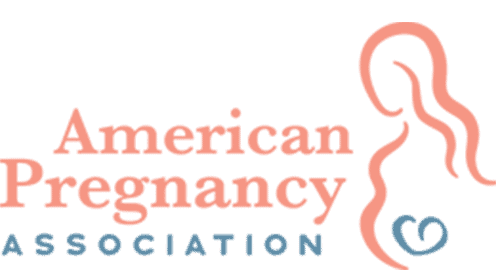One of the most important decisions you make will be about breastfeeding your newborn. Just like pregnancy, it’s very natural but not very intuitive at first. There’s a lot to know about breastfeeding so let’s look at the basics of breastfeeding.
The Benefits of Breastfeeding
Research shows breastfed babies have a decreased likelihood for allergies and dental caries. They also benefit from appropriate jaw, teeth and speech development as well as overall facial development. Breastfeeding has been shown to be protective against many illnesses and conditions, including:
- Painful ear infections
- Upper and lower respiratory ailments
- Colds, viruses, staph, strep and e coli infections
- Allergies
- Intestinal disorders
- Type 2 diabetes
- Certain childhood cancers
The Basics of Breastfeeding
Breast milk is produced naturally by women and provides basic nutrition for a baby during the first several months of life. Your breast milk is made to order for your baby and provides the specific nutrients your baby needs to grow, both in size and maturity.
Breast milk has three different and distinct stages: colostrum, transitional milk, and mature milk.
Colostrum is the first stage of breast milk. It occurs during pregnancy and lasts for several days after the birth of the baby. It is either yellowish or creamy in color. It is also much thicker than the milk that is produced later in breastfeeding.
Colostrum is high in protein, fat-soluble vitamins, minerals, and immunoglobulins. Immunoglobulins are antibodies that pass from the mother to the baby and provide passive immunity for the baby. Passive immunity protects the baby from a wide variety of bacterial and viral illnesses. Two to four days after birth, colostrum will be replaced by transitional milk.
Transitional milk occurs after colostrum and lasts for approximately two weeks. The content of transitional milk includes high levels of fat, lactose, and water-soluble vitamins. It contains more calories than colostrum.
Mature milk is the final milk that is produced. 90% of it is water, which is necessary to keep your infant hydrated. The other 10% is comprised of carbohydrates, proteins, and fats which are necessary for both growth and energy. There are two types of mature milk:
- Fore-milk: This type of milk is found during the beginning of the feeding and contains water, vitamins, and protein.
- Hind-milk: This type of milk occurs after the initial release of milk. It contains higher levels of fat and is necessary for weight gain.
How Do You Know When Baby is Ready to Breastfeed?
Breastfeeding will be easier if you answer baby’s requests instead of waiting for their demands. So be alert for their feeding cues. Once you and your baby are “in-tune” with one another, baby will know how best to alert you when hungry.
- A baby starts with subtle nursing cues— eyes moving beneath eyelids, eyelids fluttering before they even open, hands coming toward face, mouth movements.
- Then she adds more obvious ones— rooting toward your chest, whimpering or squeaking.
- If you offer to nurse now, she’ll probably take your breast gently and easily.
- As her hunger builds, her body and mouth tense. She breathes fast or starts to cry.
- Once she’s crying, she’ll have a harder time latching. Crying is a late sign of hunger. Calm her down before trying to feed her.
- Don’t wait for your breasts to feel full. A full breast has already started to slow down production.
- Offer even if she’s not asking, anytime you like
How Do You Know Your Baby is Getting Enough Milk?
It’s common for new moms to be concerned about their milk supply. Unlike bottle feeding, you can’t measure the volume of milk your baby drinks when you are exclusively breastfeeding. So how do you know what’s normal? Relax. When it comes to breastfeeding, there is no “normal.” All moms, with rare exceptions, can produce enough breast milk to exclusively breastfeed. Once the kinks are worked out and you and baby have an established feeding routine, breast milk production becomes simply a case of supply and demand. The amount of milk you produce is directly related to the amount of milk your baby drinks at each feeding. That’s because your baby’s nursing stimulates your prolactin – the hormone responsible for producing milk. The more baby nurses, the more prolactin you will produce, and the more milk you will make.
Here are a few clues to note to be sure your baby is eating enough:
Breastfeeding Frequency and Duration: Note the number of feedings per day and how long your baby nurses at each feeding to get an idea of how much your baby is eating. In the first few days after birth, baby will need to nurse frequently, as often as every ½ hour. Most newborns need 10-45 minutes to complete a feeding. Don’t be in a hurry. This is an important time for baby to be nourished and for the two of you to bond.
Diaper Volume: Note how often and how much your baby is urinating. During the first few days of life, baby will wet 1-2 diapers a day. Once your milk comes in around day 3 or 4, you can expect to change 5-6 disposable diapers per day.
Suck Swallow Pattern: Note the quick sucks at the beginning of a feeding, which will stimulate let-down, followed by long, slow sucks with regular swallowing and a breath after every one or two sucks. If you can identify this suck-swallow pattern, then you will know that baby is nursing successfully.
Crying after a Feeding: It is a common myth that crying after a feeding means baby is still hungry. Rule out all possibilities for the distress and rethink offering a bottle as a solution because it can cause nipple confusion and/or decreased milk production.
Sleeping through the night: It’s another common myth that babies will sleep through the night by the time they reach 3 months of age. Encouraging your baby to sleep through the night, because that is what is expected, can have detrimental effects on your milk supply. Plus, sleeping through the night may indicate baby is not getting enough to eat. A baby who sleeps longer than 4 hours more than once or twice in a 24 hour period may be sleeping to conserve calories because he isn’t getting enough to eat. Babies may need to feed during the night to get in the calories missed during a busy day or due to a period of separation from mom, especially if mom has gone back to work.
Visit with a Lactation Consultant to learn more about breastfeeding and breast milk.
Want to Know More?
Compiled using information from the following sources:
- How Do I Know My Baby is Getting Enough Milk?, by Kelli Bottolfson-Brown, Fairhaven Health
- Olds, London, and Ladewig’s Maternal Newborn Nursing
Melloni’s Illustrated Dictionary of Obstetrics and Gynecology






